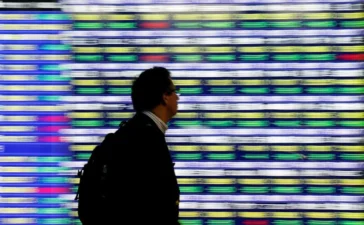What’s going on here?
The Indian rupee closed at a record low of 83.9725 against the US dollar on Monday, reflecting a broader decline in Asian currencies ahead of key US inflation data.
What does this mean?
The Indian rupee’s tumble to 83.9725 against the dollar marks its lowest closing level ever, down from 83.9550 in the previous session. This fall aligns with a general weakness in Asian currencies, which dropped between 0.1% to 0.8%. The Reserve Bank of India (RBI) likely intervened by selling dollars to prevent a more significant depreciation. Meanwhile, the dollar index dipped slightly to 103.1. Traders are eagerly awaiting the release of US consumer inflation data on Wednesday, as it will guide expectations on the Federal Reserve’s (Fed) rate policy. With interest rate futures pricing in about 100 basis points of cuts over 2024, starting in September, any surprising inflation numbers could shift these expectations.
Why should I care?
For markets: Currency market jitters.
Investors should note the broader trend of Asian currency weaknesses, with the rupee’s dip a case in point. The RBI’s intervention to stabilize the rupee highlights ongoing volatility in the currency markets. Moreover, forward premiums on the dollar-rupee exchange weakened, indicating traders’ cautious stance. With the 1-year implied yield dipping to 2.02%, some financial strategists recommend waiting for more favorable conditions before making new investments in this pair.
The bigger picture: Eyes on inflation.
The release of US consumer inflation data mid-week holds significant weight for global and Asian markets alike. This data will influence the Fed’s decisions regarding rate cuts, especially as interest rate futures currently factor in around 100 basis points of cuts over the next year. MUFG Bank suggests that with the resilient US economy and uncertainties surrounding the upcoming US elections, there could be further adjustments to rate-cut expectations. India’s own inflation data, expected to show a reduction to 3.65% for July, will also play a critical role in shaping market sentiment.
















